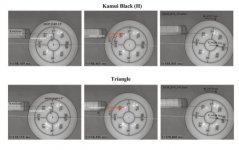However... even without external resistance, there remains an internal resistance, by the object itself. An astronaut pushing a one-ton satellite out of the cargo bay of the space shuttle quickly finds that even though the satellite seems "weightless," it is not easily moved. Given a push by the astronaut, it will indeed start to move, but v-e-r-y v-e-r-y s-l o-w-l-y . It resists being put in motion, and once moving, it resists just as much being slowed down or stopped.
(In Newton's day, of course, no one had any experience in moving "weightless" satellites in orbit. However, people were quite familiar with the docking of ships and large boats. A heavy boat acts very much like a "weightless" satellite: the water supports its weight, but offers very little resistance to slow motion. And there too, when such a boat is pushed away from the dock, it starts moving very gradually: but once it is moving, it is just as hard to stop.)
Newton named that internal resistance inertia.
Obviously, inertia increases with the amount of matter. A bowling ball is harder to get moving and harder to stop than a hollow rubber ball of the same size.
The bowling ball is also heavier, that is, it is pulled downward with greater force: but weight is an effect of gravity, while inertia is not. The two seem to go together in some way,..
https://www-spof.gsfc.nasa.gov/stargaze/Snewton.htm
